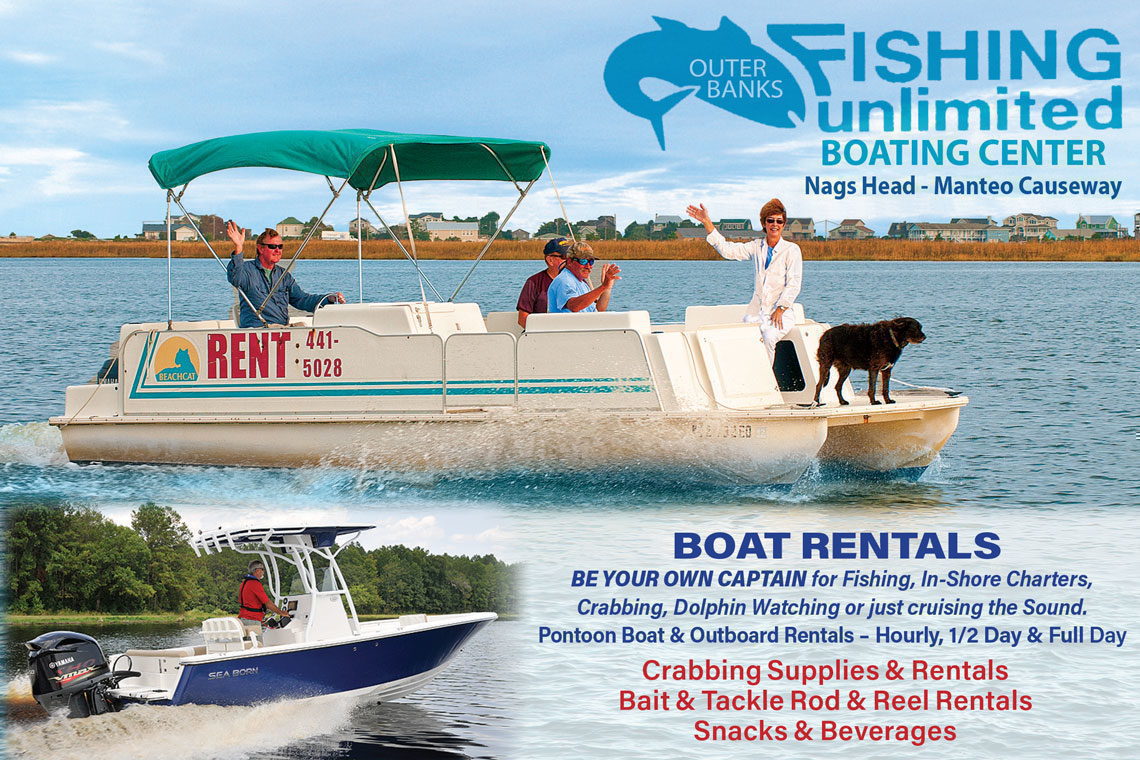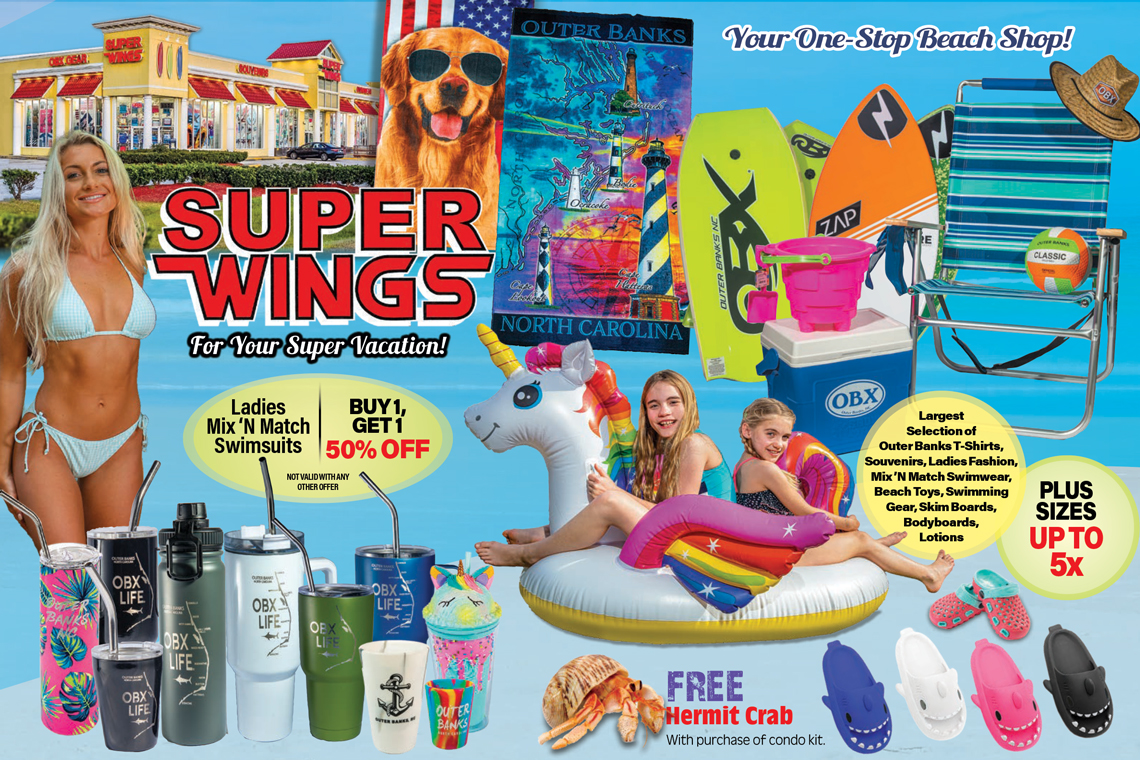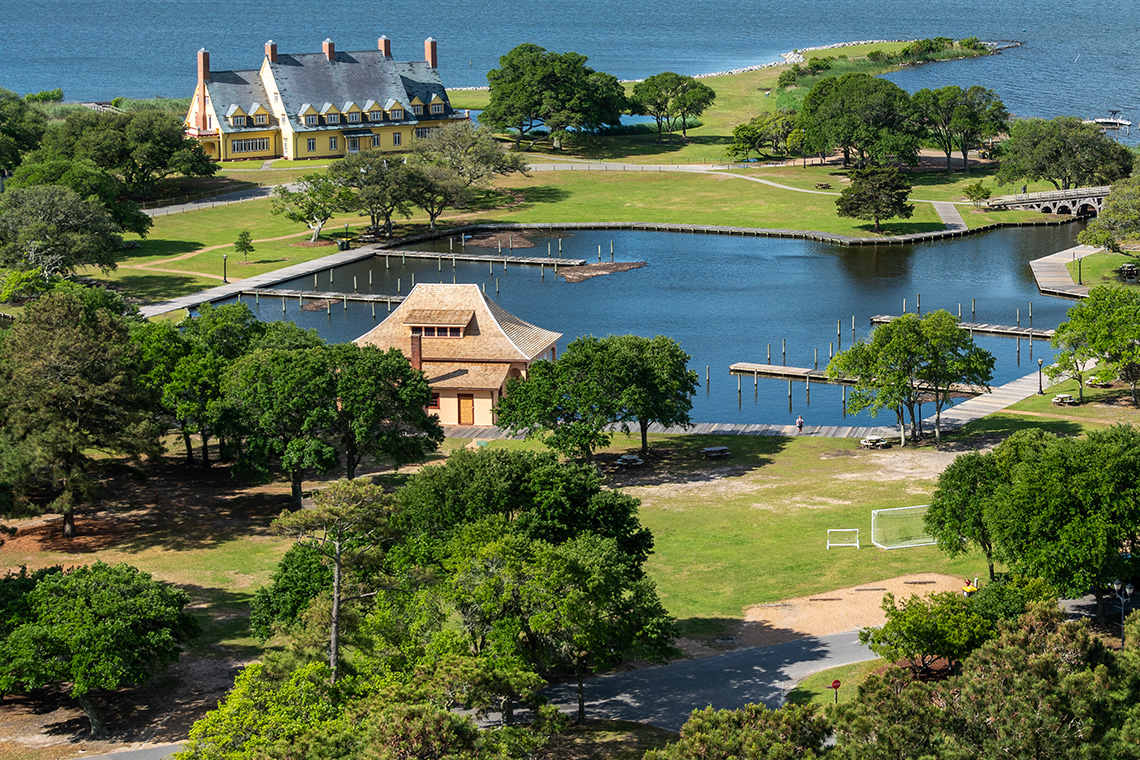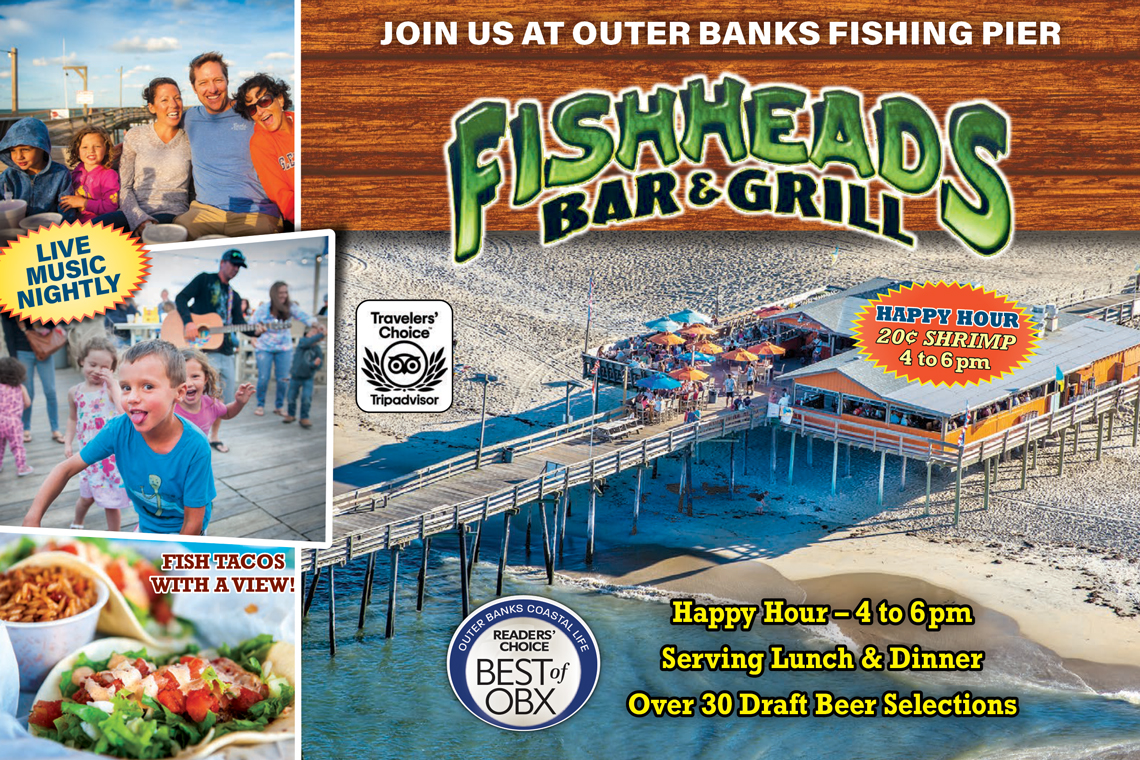
- Nags Head
- 252-441-5740
- Map it
When it comes to surf fishing, it’s hard to beat the coastline of North Carolina. Well known for hundreds of miles of beaches where record-breaking catches are landed on a regular basis, the North Carolina shoreline is arguably one of the top destinations for surf fishermen in the U.S.
So if you are new to the N.C. coastline, or just want to brush up on your surf fishing insight, take a closer look at everything you need to know about casting from the coast, and get ready for plenty of opportunities to reel in the catch of a lifetime.
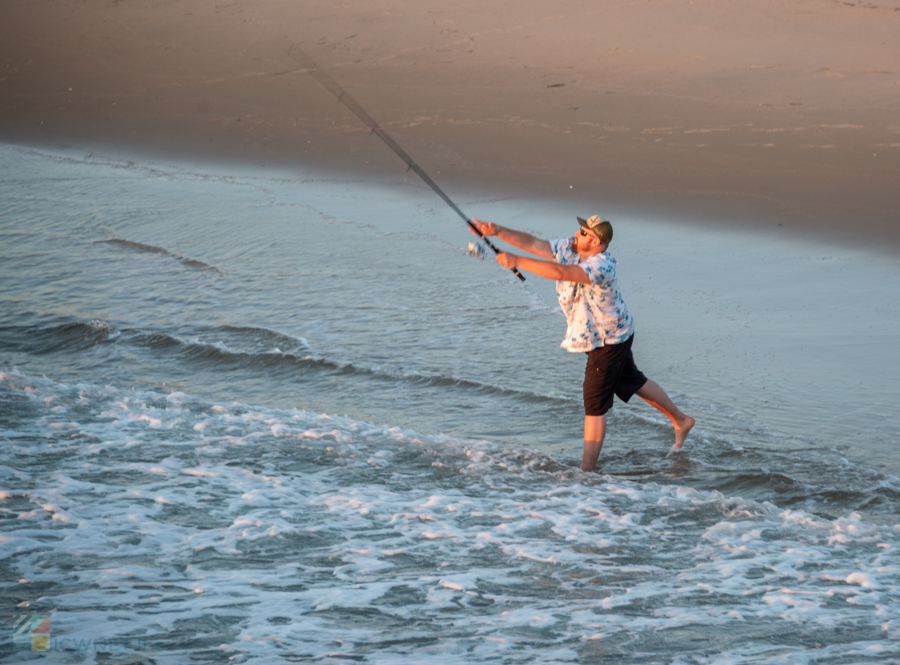
https://www.ncwildlife.org/
Every state has specific rules and regulations in place to help manage natural resources, and North Carolina is no different. One of the ways these conservation efforts are funded is through saltwater fishing licenses, which help to support fisheries management programs, like hatcheries, habitat research, and fish stocking.
As such, all anglers who fish along the North Carolina beaches, sounds, and any body of saltwater on the coast or barely inland will need to have a Coastal Recreational Fishing License, (also known as a saltwater fishing license.)
Here’s what you need to know about obtaining a saltwater fishing license in North Carolina:
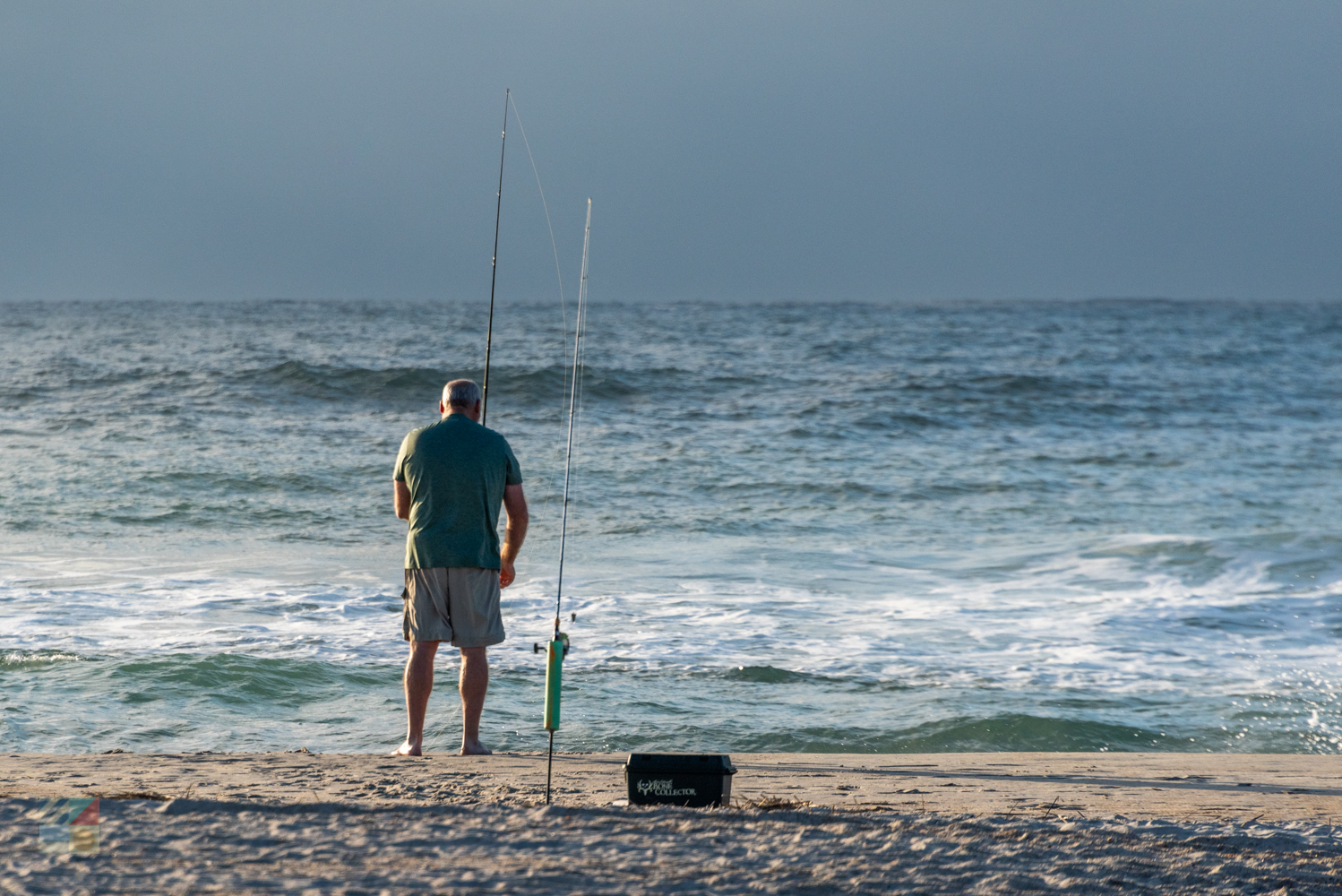
Once you have your coastal recreational fishing license in hand, it’s time to start thinking about gear. Anglers will find tons of options when it comes to equipment for casting into the surf, from custom designed rods and reels at local tackle shops, to name brand varieties that are designed for multiple areas along the coastline.
We were not provided with free or discounted products to review. These recommendations were not influenced by manufacturers. We did, however, heavily consider customer reviews at retail websites when deciding which products to feature. We like these products, but we took care to make sure other customers agree. Some of the product links include affiliate codes. If a purchase is made, OuterBanks.com is paid a commission for the referral.
Surf Fishing Rod and Reel Combos
Rods can be purchased separately, or as a rod and reel combo. Though the length can vary by beach and surf conditions, local anglers traditionally recommend using an 8′ to 16′ light to medium surf type rod, which can adapt to most conditions and most species. Keep in mind that the rod you choose has a lot to do with your physical size – some rods are heavy, and can tire out an angler quickly after multiple casts.

CNC Gear Technology * Hydro Armor system seals critical areas from water intrusion * HT-100 carbon fiber drag washers * 5+1 sealed stainless steel ball bearing system * Line Capacity Rings

Sougayilang Baitfeeder Combo Surf Fishing Rod Combo Medium/Heavy 3 Piece Travel Spinning Rod with 4000 Size Reel (10') * High-quality Guides: Stainless steel guides with ceramic inserts make it more...
Surf Fishing Line
Your line will literally make or break your ability to reel in a catch. Look for 20-25 test line for the best results in all conditions, and go for Nylon Monofilament, Fluorocarbon, or Braided Line varieties in terms of materials. Monofilament nylon is a great choice for new anglers, as it is fairly cheap, knots well, and has an inherent stretch, which is a great attribute for surf fishermen who are developing their skills.
Rigs for Surf Fishing
Like all gear designed for surf fishing, when it comes to rigs and rig set-ups, there are a lot of options, which generally depend on the fish you are targeting, the season, and other conditions and factors that change depending on where along the North Carolina coastline you land. In fact, there is likely a unique and distinct type of rig available for every species of fish, and every type of body of saltwater.
Rod holders
Sand spike and other varieties of rod holders will hold your rod in place when you need a break, or just want to enjoy a little downtime relaxing on the beach. This piece of equipment comes in a variety of different materials – such as PVC or aluminum – as well as different lengths, and different price ranges. Rod holders that are made of PVC or ABS plastic are traditionally the least expensive, but if you’re in rough ocean conditions and do a lot of surf fishing, upgrading to a more durable metal rod holder may be your best rouet.
Pyramid weights
A pyramid weight is often the preferred weight for surf fishermen, as it can stand up to currents and hold at the bottom. A roughly 2 oz. to 4 oz. pyramid weight should hold strong in most ocean conditions, when used in conjunction with a surf rod. If it’s a rough day, or you are fishing on a beach with large breakers close to the shore, up the weight a bit to hold strong in the surf.
Cart
A cart will make a surf fisherman’s life infinitely easier when heading to and from the beach. Built to be pulled across the sand with ease, and large enough to hold all the essential equipment and then some, a beach cart is a great way to pack and tote along all the equipment you’ll need for a full day on the sand.
Look for carts that can hold a lot of weight – you may be bringing back plenty of big catches, after all – as well as carts that have larger than normal, sturdy wheels. Larger wheels will essentially transform a standard cart into a 4WD mode of transportation that can easily haul your supplies across soft sand.
Waders
If you want a longer cast, and you prefer to fish in colder or cooler weather, waders will be your best friend. Waders are effectively worn like overalls, protecting the lower 3/4th of your body from water inundation when you wade out to the surf to cast.
Don’t skimp on quality when it comes to waders! Inexpensive varieties can leak, which can turn a great fishing day into a bad one fairly quickly.
Bait and Lures
One of the hardest decisions for surf fishermen is what type of bait, or artificial lure, to use for the best results. Many local tackle shops can direct new anglers in the right direction when it comes to what’s biting, and what bait or lures to use, but here’s a closer look at some of the most popular varieties for fishing along coastal North Carolina.
Bait
Lures
When it comes to lures, there are plenty of options, and what an angler uses is all dependent on where they are headed, and what they are targeting. Bait and tackle store will provide the best recommendations for lures to use for specific species, weather conditions, and seasons, but there are a few popular varieties to try that can work in most any coastal fishing environment.
Here are some of the most popular types of lures for saltwater fishing.
Other Gear You’ll Need for Surf Fishing
In addition to all of the above essentials, there are some other tools you’ll need to bring along to ensure you have everything you need for a full day (or night) of surf fishing along the North Carolina coastline. Available at bait and tackle stores, sporting goods stores, and even traditional beach shops or grocery stores, look for these items that will make it easier to spend long hours on the beach.

BUCHANAN STYLE - FRAMES: Polycarbonate Matte Crystal Gunmetal | LENSES: Polarized Triacetate with AcuTint | COPPER TINT: A copper/rose lens tint favored for sight fishing, muddy water and very low...
★ Plating Titanium Process makes this fishing gear antioxidant, corrosion-proof, colorfast, UV resistant, high hardness in saltwater and other damp and harsh environment. * ★ Small Jaws of...

Gifts for Fisherman:Add ultralight Piscifun Saltwater Aluminum Fishing Pliers Gear to your fishing box. Make your hook removal much easier. Fish on! * Anti-Corrosion Materia:The aircraft-grade...

G4116 German Stainless Blades – The razor sharp G4116 German Stainless-Steel blade has a beautiful black finish and will maintain its edge longer to make the job of cutting bait easier. * Serrated...

PLANO Z SERIES 3700 TACKLE BAG: The Z-Series Tackle Bag is durably designed with a waterproof base, PVC fabric, and easy-access attachment points. Dimensions: 10”L x 18.8”W x 10.2”H. * THE...
Surf fishing in North Carolina is naturally affected by the weather. Different species can be abundant or non-existent depending on so many natural factors, such as the season, the weather, the tides, and the inherent shape of the shoreline itself.
If you want to know what to target, and how successful you’ll be when you start casting, then you need to know the fundamentals of a North Carolina beach when it comes to surf fishing. Here’s a little insight on the basic elements that impact surf fishing from Duck to Oak Island and Holden Beach, and how you can use these varying factors to your best advantage.
Seasons
A number of saltwater species that frequent the North Carolina coastline are seasonal, which means that they are always on the move as they migrate up and down the coastline. The always popular red and black drum are notorious for this movement and seasonal appearances, as they can be found in droves when the conditions are just right, and they en route along the East Coast.
A good rule of thumb when it comes to seasonal and migrating species is that they tend to head north for the summer, and tend to head south for the winter. This is why the late spring, early summer, and fall are arguably the best times for surf fishing in North Carolina. During these times of year, anglers have the best chances of reeling in migratory catches, as well as local species that are at their most abundant close to shore when the water temperatures are warm.
Weather
Ideal weather conditions for surf fishing can be tricky to pinpoint because there are all sorts of different factors to consider. An onshore breeze can provide an increase in larger fish swimming closer to shore, but conditions that are too windy can affect the clarity of the water, and can make surf fishing difficult. Needless to say, rain can also hinder the water quality, and can make a day of surf fishing a soggy experience.
On the whole, aim for sunny days with a light onshore breeze. A low pressure is considered preferable to a high pressure during a spring tide, and if the weather conditions aren’t conducive for fishing, (like extremely windy days, or where there’s an offshore hurricane in the area), and the conditions have been poor for more than a day, it’s best to wait a day or two before heading out to the beach again. It typically takes at least a day for fish to acclimate after a bout of severe weather, and to return to the waters close to shore after the bad weather has subsided.
Tides and Time of Day
Tides have a major influence on surf fishing all along the North Carolina coastline, and a general rule of thumb is that high tide is better than low tide, simply because it’s easier to reach deeper waters with every cast. Try to aim for high tide, or up to two hours before or after a high tide. Slack tide – or the time period right in between low and high tide – is generally not as productive for surf fishing.
As for time of day, early morning and dusk are typically when a number of varying species feed. So head out to the beach before 9 a.m. or about an hour or so before sunset. Not only will you miss the sunbathers and other beach crowds, but you’ll also have the best chance of taking advantage of the nocturnal feeding habits of a wide array of saltwater fish.
Reading the ocean waters
Experienced surf fishermen can generally tell if a beach is good for fishing with just a few casts, or even a quick look. Considering that the North Carolina shoreline varies greatly with every mile, there are a few things to look for when it comes to determining if your stretch of sand will be a solid fishing spot.
Avoiding dangers
When the weather conditions aren’t right, surf fishing can actually be a potentially dangerous sport. To mitigate the odds of injury, stick to the following tips that will ensure you remain safe on every trip to a North Carolina beach.
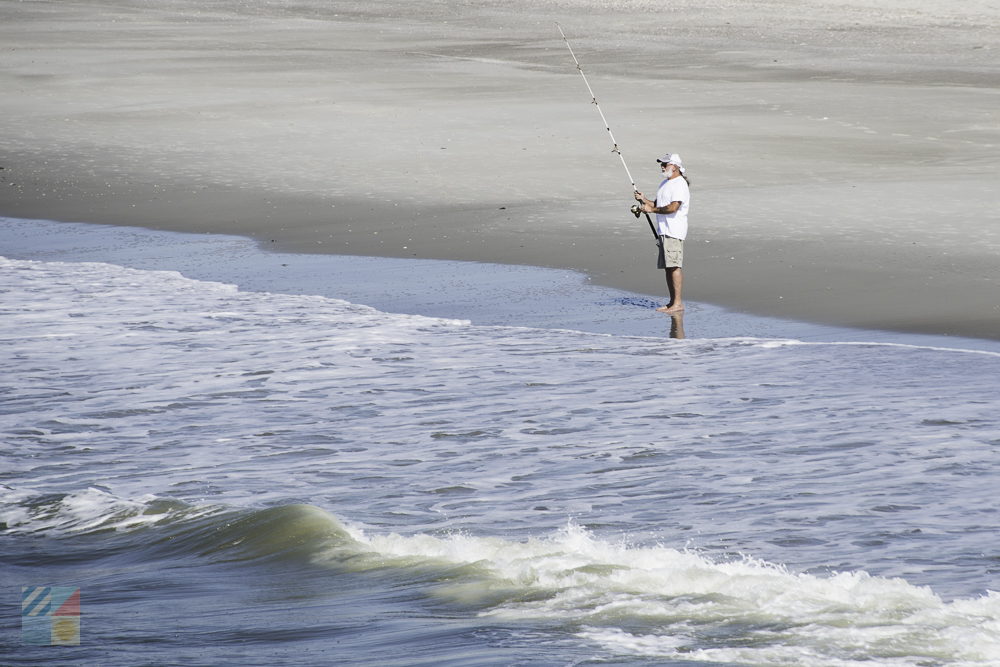
There are several techniques when it comes to casting, hooking, and reeling in fish, which depend on where you land along the North Carolina coastline. How you fish from a pier will likely be different from how you fish from along the shore, and there are a myriad of considerations to keep in mind for both types of saltwater fishing.
Pier fishing
Pier fishing is popular in coastal North Carolina simply because it is so plentiful, and can have so many big rewards. There are multiple fishing piers located in every developed corner of the North Carolina coastline, which includes the Outer Banks, Hatteras Island, the Crystal Coast, the Cape Fear area, and the Brunswick Islands, so no matter where you land, (with the exception of isolated barrier islands like the Cape Lookout National Seashore), chances are that you’ll be close to a local fishing pier.
A saltwater fishing license is also not required to fish from a North Carolina pier, and many piers offer on-site bait and tackle stores, convenience stores, or even full-service restaurants and bars. But the primary benefit to fishing off an oceanfront pier as opposed to a local beach is all about the location. The fishing piers on the North Carolina coastline can extend anywhere from 600’ feet to 1000’ feet or more into the Atlantic Ocean, which means that you’re that much close to the big catches that are found slightly offshore. In fact, in the summer months, it’s not that uncommon to hear reports of dolphin or even wahoo catches, which are offshore species that tend to trickle in closer to the beach when water temperatures are high enough.
Techniques, tips and tricks for pier fishing
Keep the following in mind on your next pier fishing trip to maximize your chances of reeling in plenty of catches.

Surfcasting, or beachcasting, is easily the most popular form of fishing along the North Carolina coastline, simply because it can be done on any stretch of shoreline, and in any weather. With the exception of seasonal closures for endangered bird or sea turtle nesting, all stretches of the North Carolina shoreline are open to anglers, which literally gives fishermen hundreds of miles of options when it comes to finding a spot to fish.
Surfcasting involves wading out into the ocean waters or standing on the edge of the beach and casting a line as far as it can go. The casting rods used in surf fishing are generally long and can range anywhere from 10 to 16’ feet, and while casting, anglers will use both their hands and their entire bodies to propel the rig as far as it can go. It’s a challenging skill to master for newcomers, and there are even surfcasting competitions around North Carolina, and around the world, for casting a line the farthest distance. (Currently, the world record for casting is at 313 yards.)
The benefits of surfcasting are endless. It’s easy, convenient, and can be done anywhere, and as far as fishing goes, it’s the least expensive type of fishing you’ll find along the oceanfront shoreline. Perhaps best of all, it’s a sport that can be enjoyed by anyone – regardless of age, skill, or familiarity with the beaches of North Carolina.
With that being said, there are a few tips, tricks and techniques that anglers can keep in mind to make their surfcasting as fruitful as possible.
Techniques, tips and tricks for surfcasting
One of the best things about surf fishing in North Carolina is that every season and stretch of shoreline changes. What you’ll catch in the winter months is often distinctively different than what you’ll land in the summertime, and what you might catch in a warmer region like Oak Island could be different than what you’d catch along the Currituck County beaches during identical times of year.
With that being said, there are a variety of popular saltwater species that can veritably pop up anywhere along the coastline, from the northern Virginia border, to the southern South Carolina state line. So when you go surf fishing, be on the lookout for these types of fish that frequent the ocean waters off the North Carolina coast, and which are popular and sometimes coveted catches for local and visiting fishermen alike.
Types of fish and seasons
Surf fishing in North Carolina is arguably one of the best and most popular activities on the beach. Enjoyed anywhere, and at any time of year, surf fishing can be a great way to spend lingering days along North Carolina’s hundreds of miles of stunning shorelines.
From the isolated barrier islands of Hatteras Island and the Cape Lookout National Seashore, to the bustling beach towns of Carolina Beach, Oak Island, and Nags Head, any stretch of sand can yield some spectacular results. So be sure and bring along your gear, your fishing license, and your luck – you never know what you’ll land when you try surf fishing in North Carolina.


